Cymbopogon bombycinus
(R.Br.) Domin
Citronella grass; Silky Oilgrass
(Sim-bow-poh-gone; bomb-bee-see-nus)
A robust clumping grass, with several long flowering stems to 1.2 m tall (Fig. 1). The leaves are usually tightly spiralled and mostly concentrated around the base of the flowering stems, turning red-brown to copper coloured with age, and strongly lemon-scented. Stems hold several flowering heads or clusters, these flower heads are borne at the end of the flowering stems for 1/5-1⁄2 of the stem length. When young these clusters are enclosed or partially enclosed in a leaf-like sheath (or spathe) (Fig. 2 & 3). In most cases, these sheaths then enclose, or partially enclose, 1-4 smaller sheaths (or spatheoles). The smaller sheaths (spatheoles) each contain two branches, comprised of the basic flowering units or spikelets, which emerge from the sheaths with age. The spikelets are arranged in pairs, each pair stacked one after the other in what appears as a solid spike-like branch (Fig. 2 & 3). This flowering spike/branch becomes fragile with age and breaks apart between the pairs of spikelets (Fig. 4 & 5). Each spikelet pair consists of a stalkless/sessile spikelet, a stalked/pedicelled spikelet, and an internode (a segment of the flowering stem) (Fig. 4). The internode connects each spikelet pair to the next spikelet pair on the spike (Fig. 4). The base or callus of the spikelet pair slots into a socket formed at the tip of the internode of the spikelet pair below it. The length of the hairs at the base of the spikelet pairs can be useful in diagnosing this species. Please be aware, when mature, these spikelet pairs can be densely hairy and this makes identifying the different components difficult, especially if it is not possible to tease apart the structures under magnification. Also, the degree of hairiness can be vary depending on the maturity of the spikelets.
BOTANICAL DESCRIPTION
Perennial, culms erect, 30-120 cm tall. Leaf-blades 15-40 cm long, 1-4.5 mm wide. Leaf-blade surface scaberulous, glabrous, becoming tightly spiralled with age. Leaf sheaths up to 6 mm wide, basal sheaths persistent and becoming flat and recurved, exposing the copper colour of the inner surface. Inflorescence compound, with paired spike-like branches, 12-18 (-22) mm long, partially enclosed in a subtending spatheole, 15-35 mm long, with several spatheoles in a cluster. Each cluster subtended by a spathe (Fig. 2 & 3), the spathe sometimes up to 100 mm long. Spikelets in pairs, one sessile and one pedicellate, several per spike/branch.The basal pair of spikelets on the lower spike/branch both sterile. The spikes are fragile at the nodes with spikelet pairs falling as a single unit. Sessile spikelets 4-6 mm long, with an awned floret, the awn 6-21 mm long. The pedicelled spikelet sterile/male, the spikelet 3-5.4 mm long. The rhachis internode and pedicels densely hairy, hairs 4-7 mm long, the spikelet callus with longest hairs between 3.5 - 5 mm long (Fig. 5).
DIAGNOSTIC FEATURES
Species of Cymbopogon are readily identified by the lemon-scented leaves when crushed, the clumping perennial form and the flower heads enclosed within spathes and spatheoles (Fig. 2 & 3). Distinguishing between species of Cymbopogon can be more difficult, and can often require dissection of flower heads and inspection of spikelets under magnification. Despite this C. bombycinus is typically characterised by the tightly spiralling leaves at the base of the stems and the bending back of the leaf sheath on the older leaves ( Fig. 6 & 7). Other identifying features include the flower heads occupying 1/5-1⁄2 of the flowering culms/stems (Fig. 1), the densely hairy spikelet pairs, and the long hairs at the base of the spikelet pair (Fig. 5). In the Cape York Peninsula (CYP) region the species it is most likely to be confused with are Cymbopogon ambiguus (Fig. 8), Cymbopogon obtectus (Fig. 11) and Cymbopogon globosus. Cymbopogon ambiguus is typically smaller in stature than C. bombycinus, growing up to 100 cm tall with usually narrow upright to wavy leaves; the spikelets are not as densely hairy (Fig. 9) and the callus hairs are shorter, up to 1.3 mm long in C. ambiguus (Fig. 10). Cymbopogon obtectus has densely hairy spikelets like C. bombycinus and it can be difficult to differentiate between them. Cymbopogon obtectus has leaf sheaths which are straight and inrolled, in those cases where the leaves are flat, the sheaths are < 3 mm wide and not rolled back. In contrast, Cymbopogon bombycinus has flat leaf sheaths, which are bent backwards or tightly spiralled backwards and up to 6 mm wide (Fig. 6 & 7). Cymbopogon globosus is differentiated from all other native species in the genus by the compact inflorescence, the flowering heads occupying only 1/10 to 1/5 of the stem.
NATURAL VALUES
The species is a robust perennial and considered highly flammable and drought resistant (Lazarides 2002), also reported as fire tolerant (Crowders & Saggers 2010).
HABITAT
Widespread in eucalypt forest and savanna regions throughout CYP, although not well collected in the region (Fig. 12). Distributed throughout Qld, the NT and WA, and although commonly encountered, rarely in any great abundance.
LAND MANAGEMENT NOTES
Usually grazed when young (Lazarides 2002, Crowders & Saggers 2010, Milson 2000 and Rolfe et al. 1997). Flowers throughout the wet season.
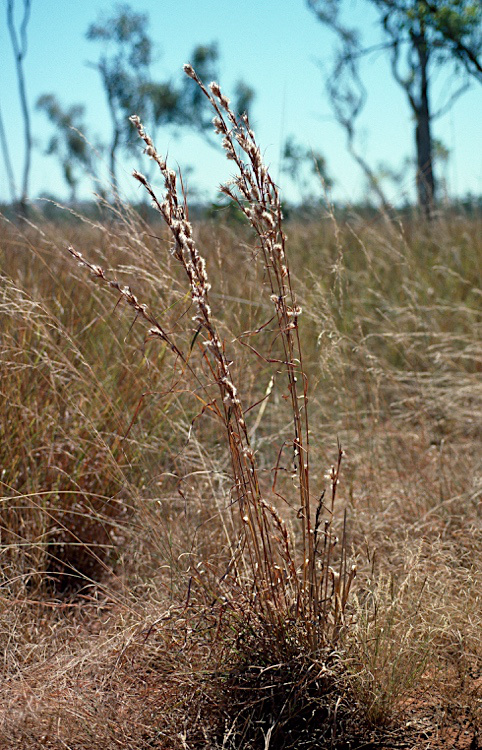
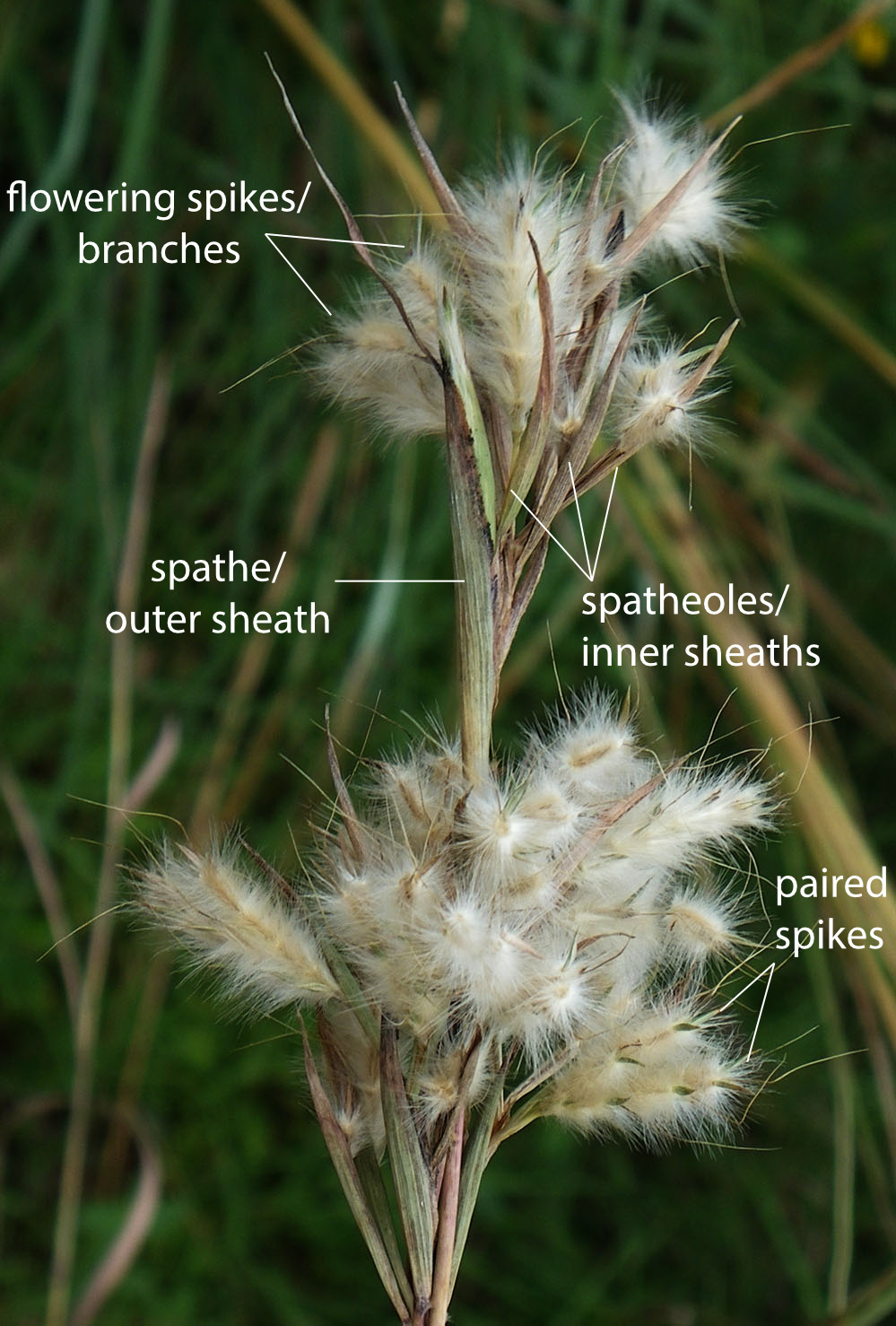
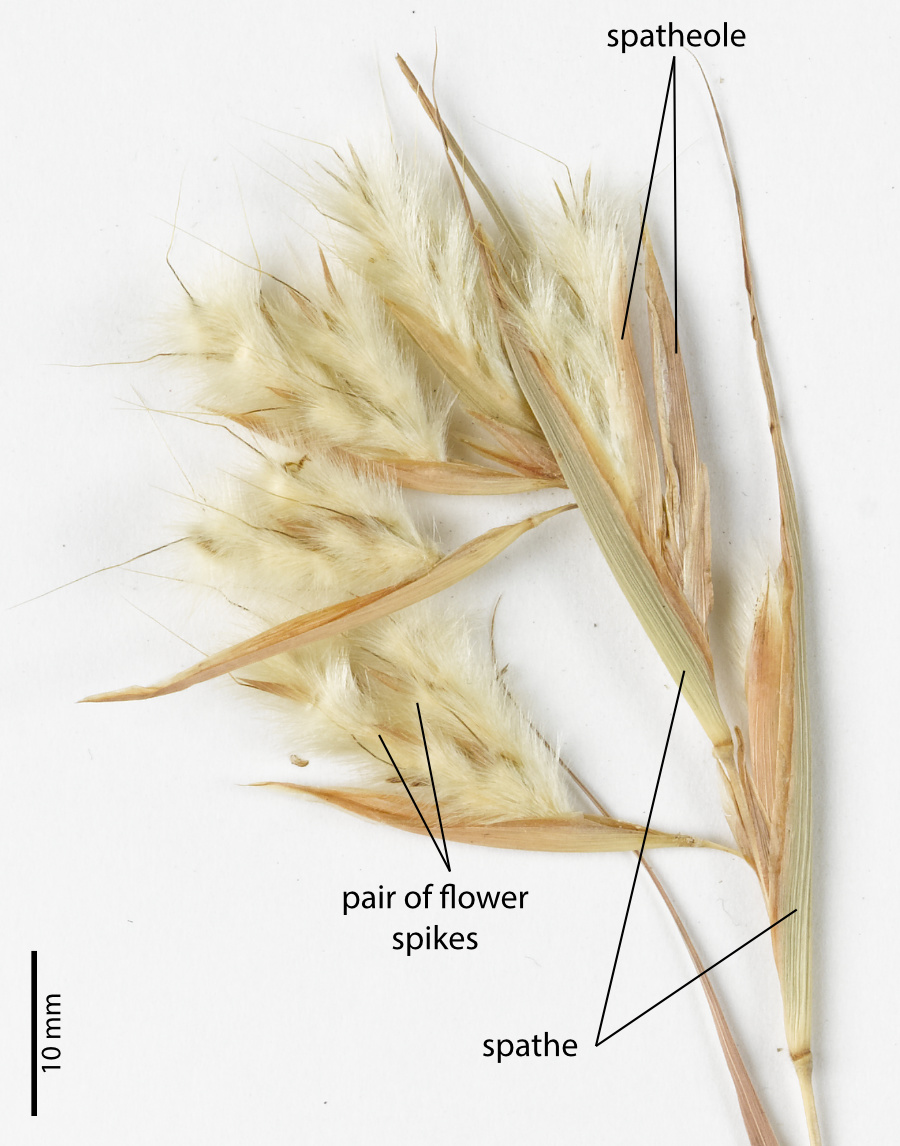
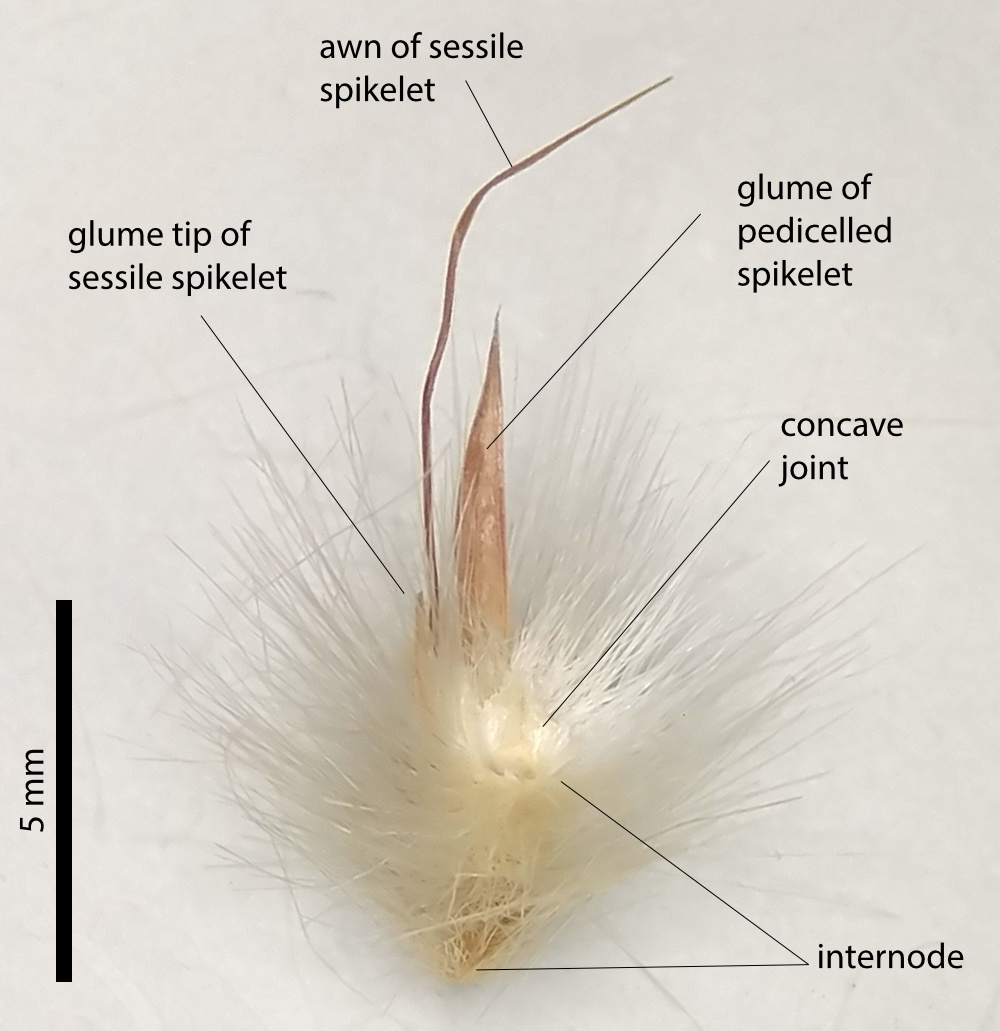
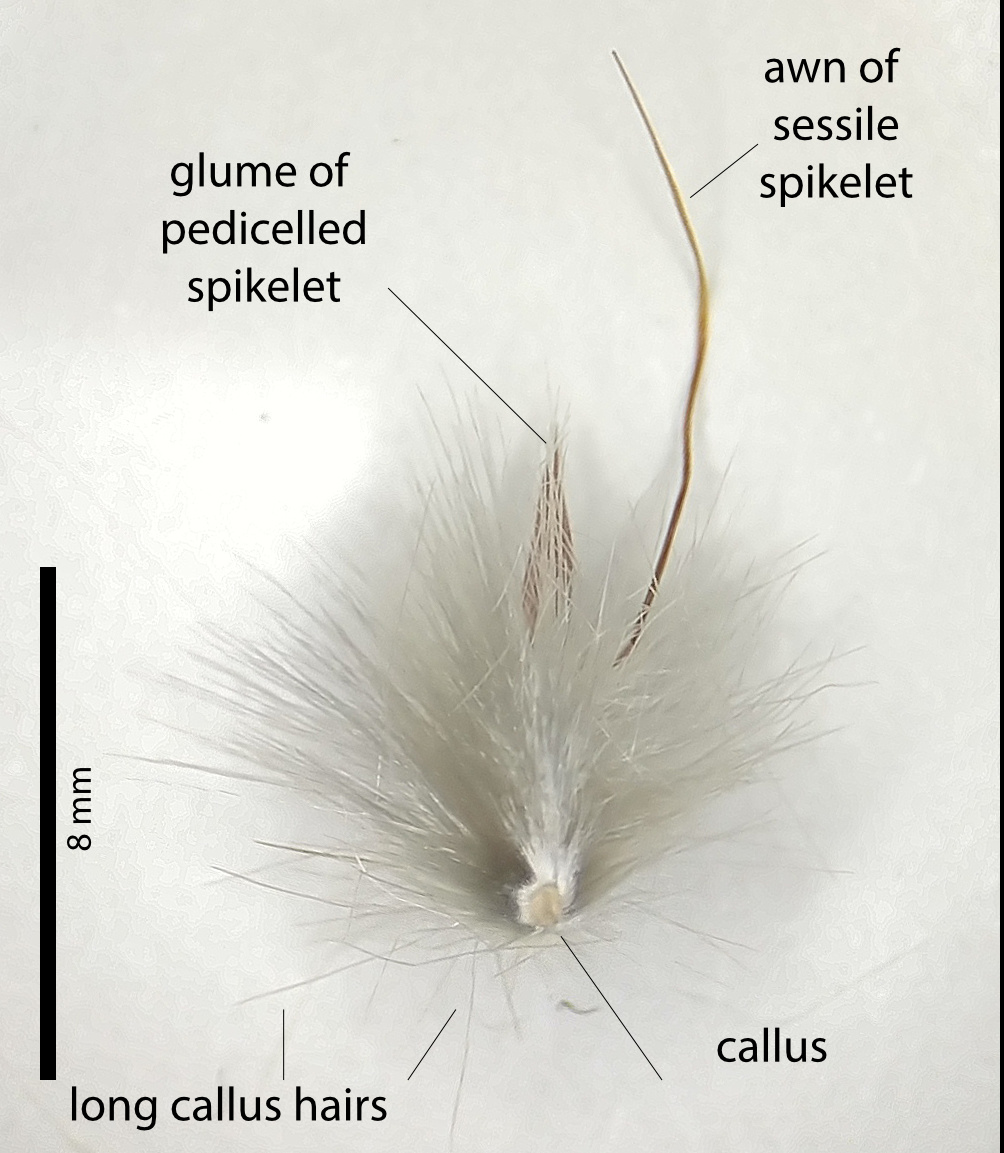
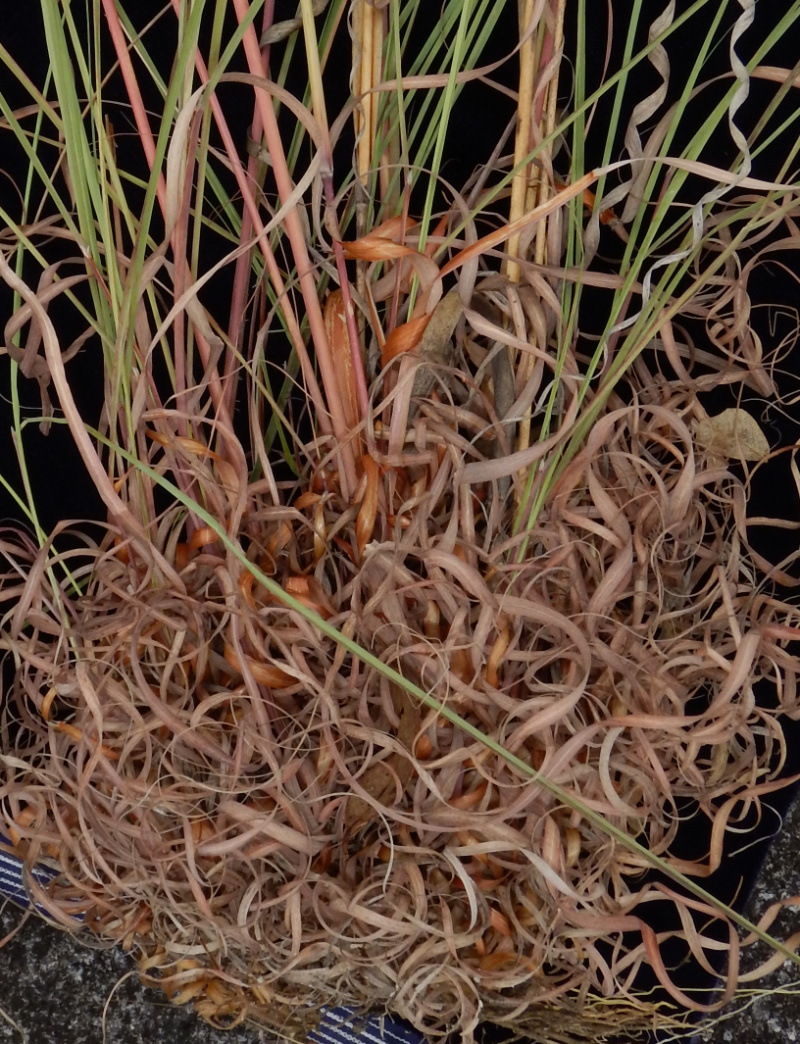
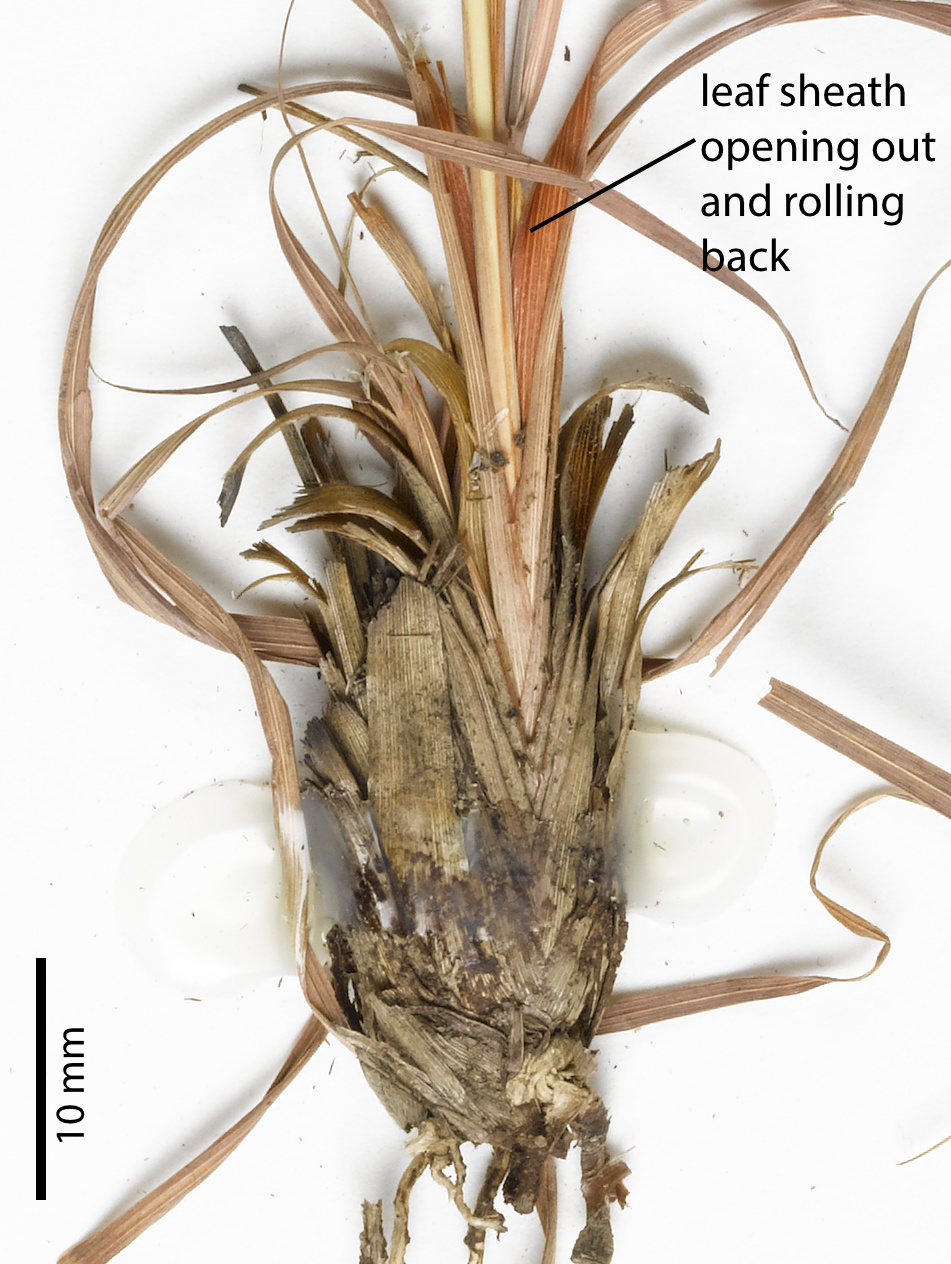
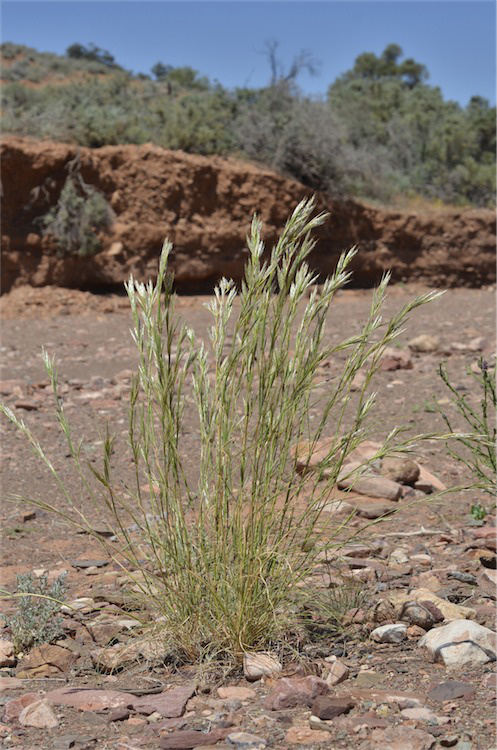
Resources
AVH (2019). Australia’s Virtual Herbarium, Council of Heads of Australasian Herbaria, <http://avh.chah.org. au>, accessed Apr 2019.
Blake, S.T. (1974). Revision of the genera Cymbopogon and Schizachyrium (Gramineae) in Australia. Contributions from the Queensland Herbarium 17: 8-14.
Crowder, S. & Saggers, B. (2010). Grasses of the Northern Territory savannas: a field guide. Greening Australia (NT) Ltd, Darwin.
Hooker, Nanette B. (2016). Grasses of Townsville. James Cook University, Townsville, QLD, Australia.
Lazarides, M. (2002). Economic attributes of Australian grasses. Flora of Australia 43: 213-245.
Milson, J. (2000). Pasture plants of north-west Queensland. Information Series Q100015. Queensland Department of Primary Industries.
Rolfe, J., Golding, T. and Cowan, D. (1997). Is your pasture past it? The glove box guide to native pasture identification in north Queensland. Information Series Q197083. Queensland Department of Primary Industries.
Simon, B.K. in Wheeler, J.R. (ed.) (1992). Cymbopogon. Flora of the Kimberley Region: 1143
Simon, B.K. & Alfonso, Y. (2011). AusGrass2, http:// ausgrass2.myspecies.info/accessed on [Apr 2019].

